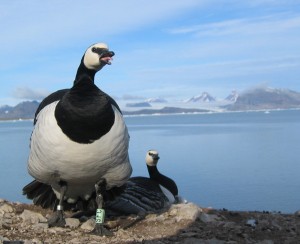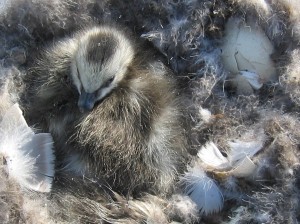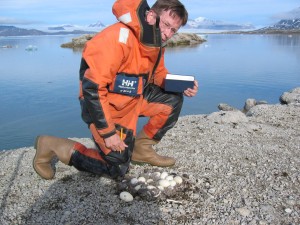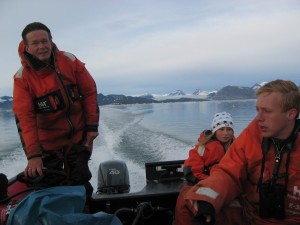|
In Ny-Ålesund, Spitsbergen, we are studying an arctic ecosystem with the Barnacle Goose as central target species.
This study started in 1990 and is still continuing. Each summer,
Maarten Loonen is spending some time with students in the field, collecting data. He made the following report.
 |
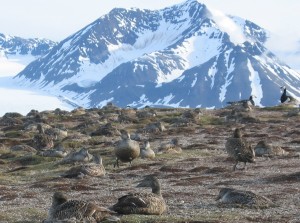 |
Counting eider duck and barnacle goose nests in KongsfjordenEach year before hatch, we count the number of nesting birds together with Geir Wing Gabrielsen of the Norwegian Polar Institue. An enormous density of nesting eider ducks and in between some barnacle geese.
We carefully move in between the nests to count the number of nests and to determine clutch sizes. From left to right, you see Jurjen Annen, Ingrid Gabrielsen and Geir Wing Gabrielsen.
In 2004, there has been a lot of ice in the fjord. The large islands have been vsited by polar foxes and polar bears and many nests have been predated. Nesting density is almost a quarter of the usual density.
There are a few island, which have not been connected to the mainland by ice. On these islands, the nesting birds have an extreme high density. |
|


